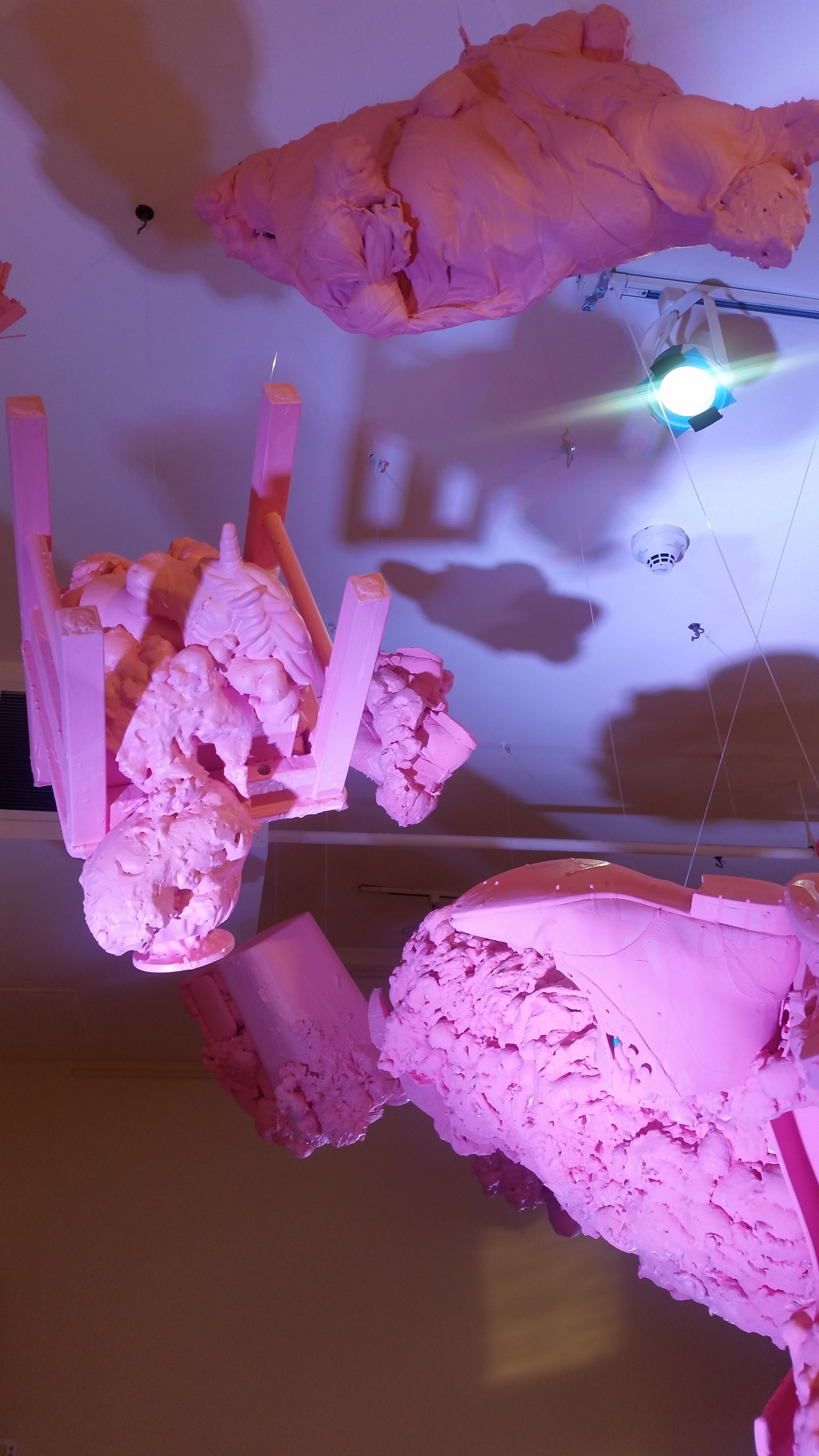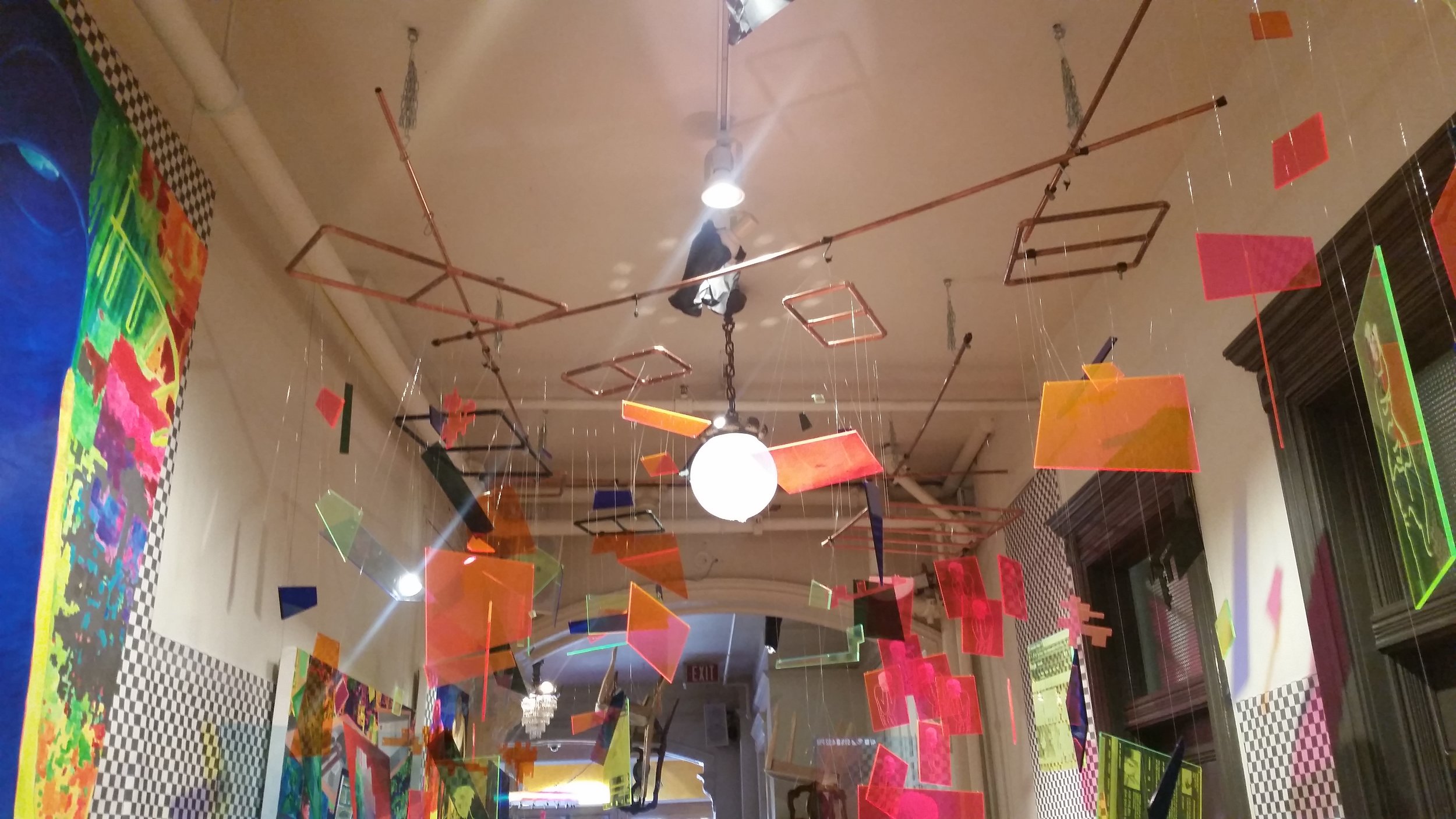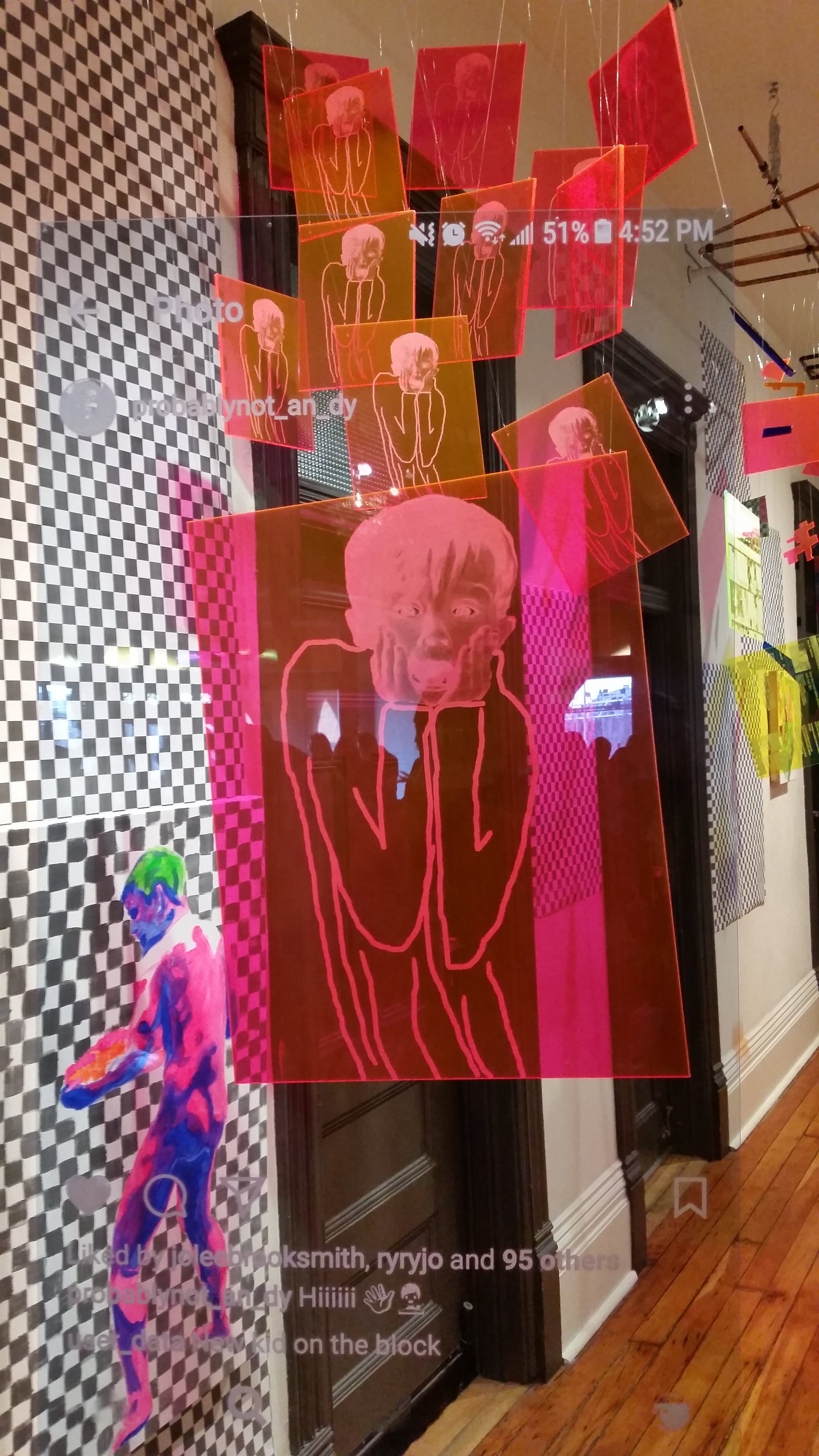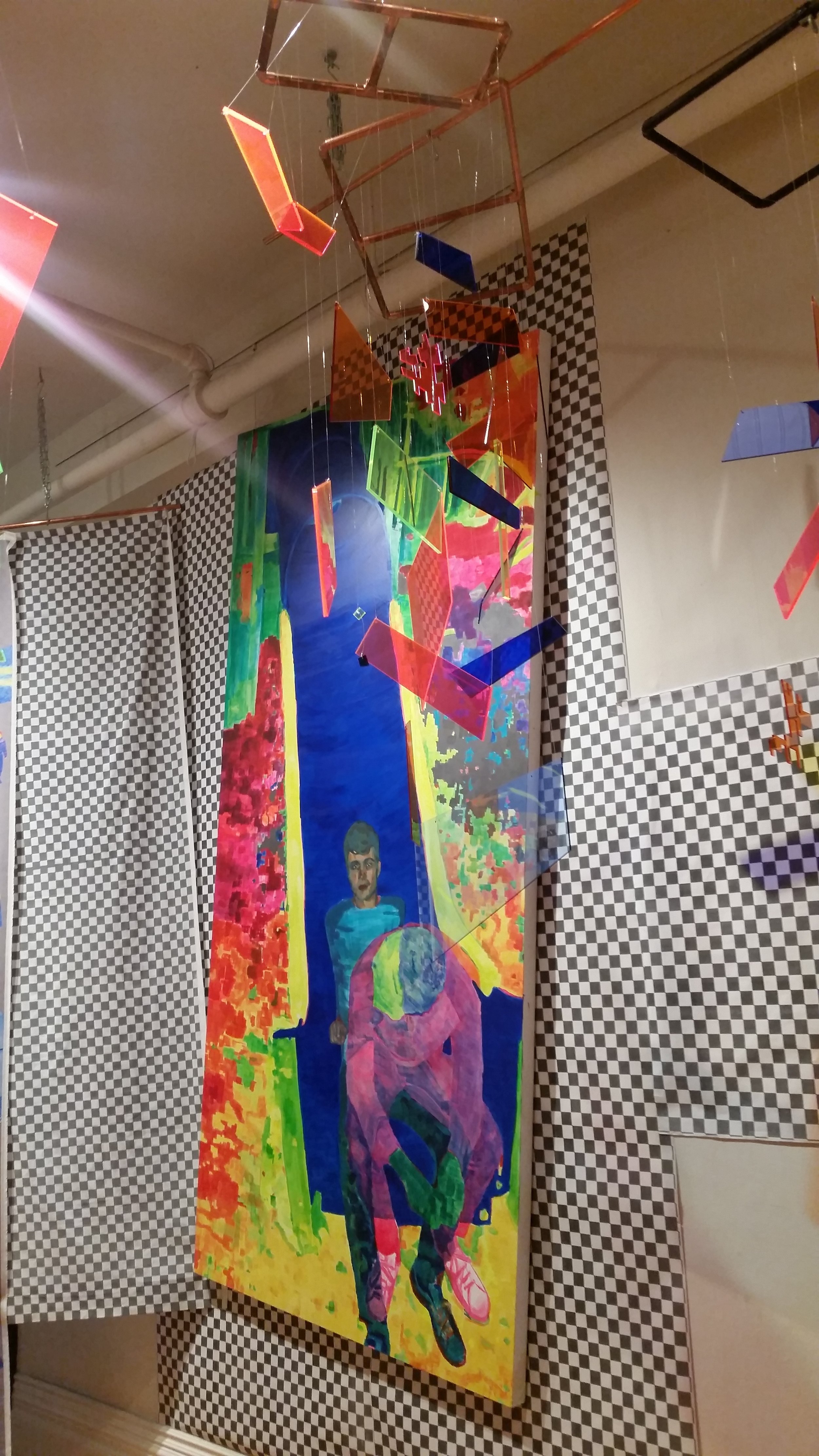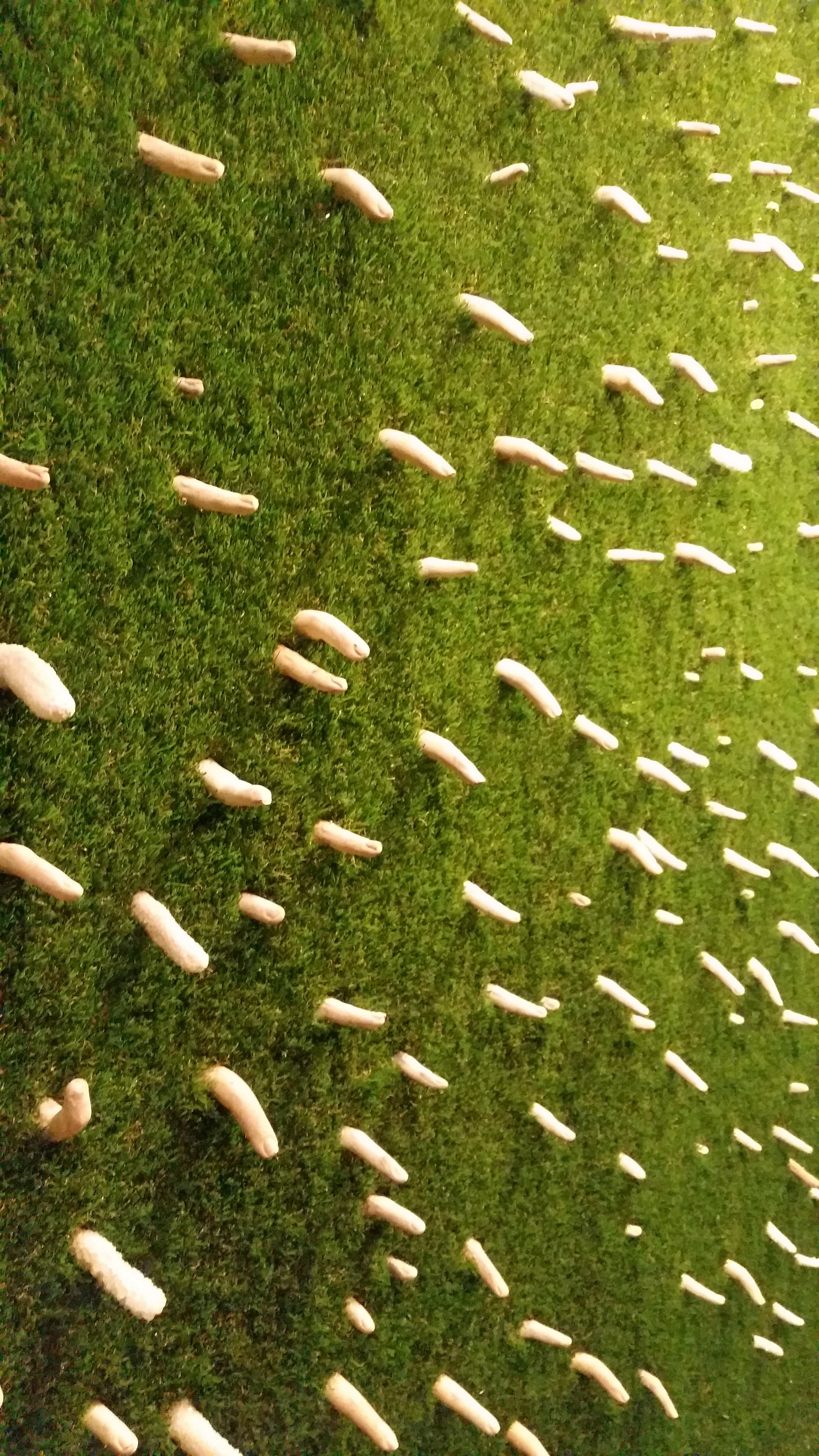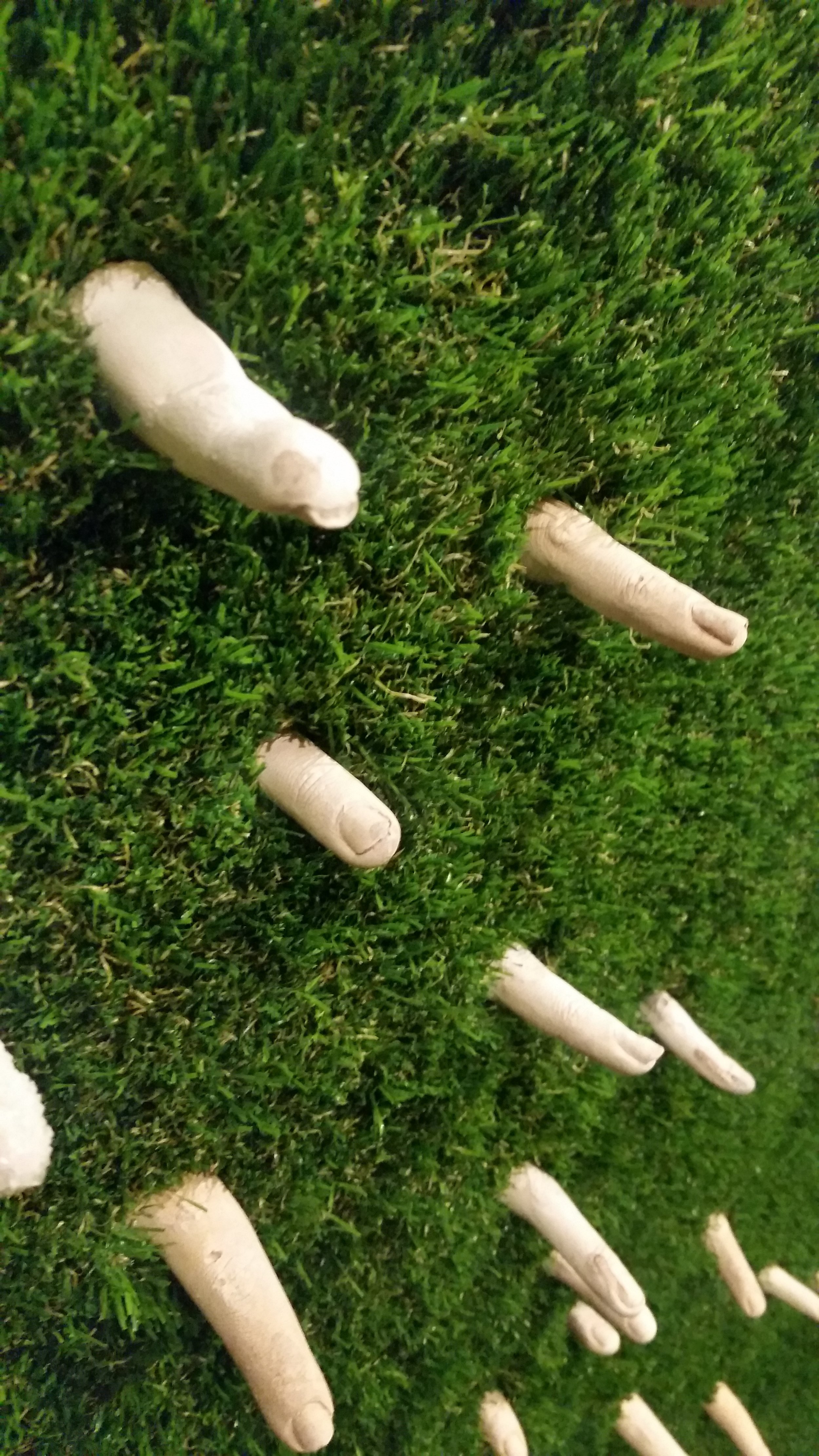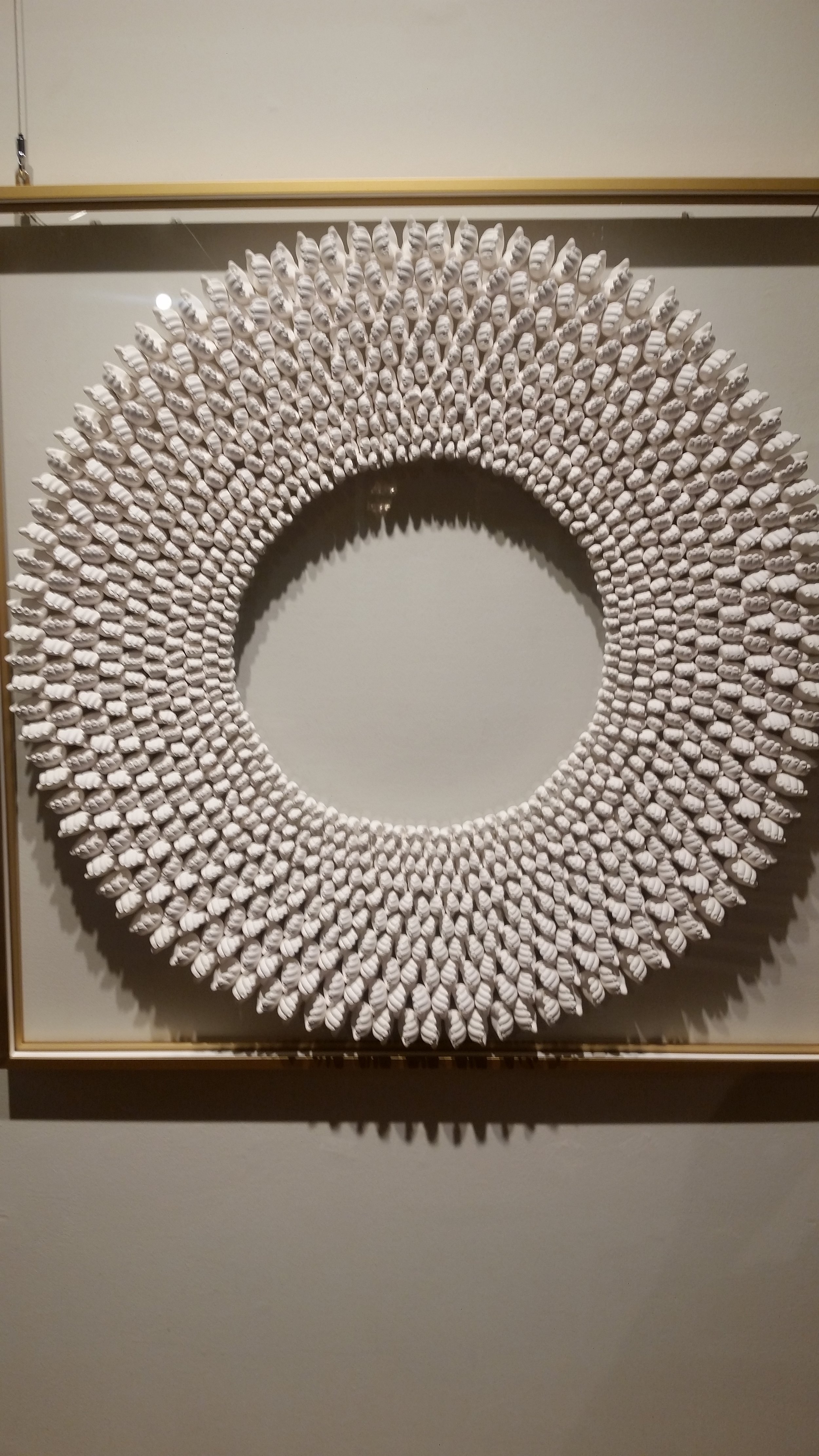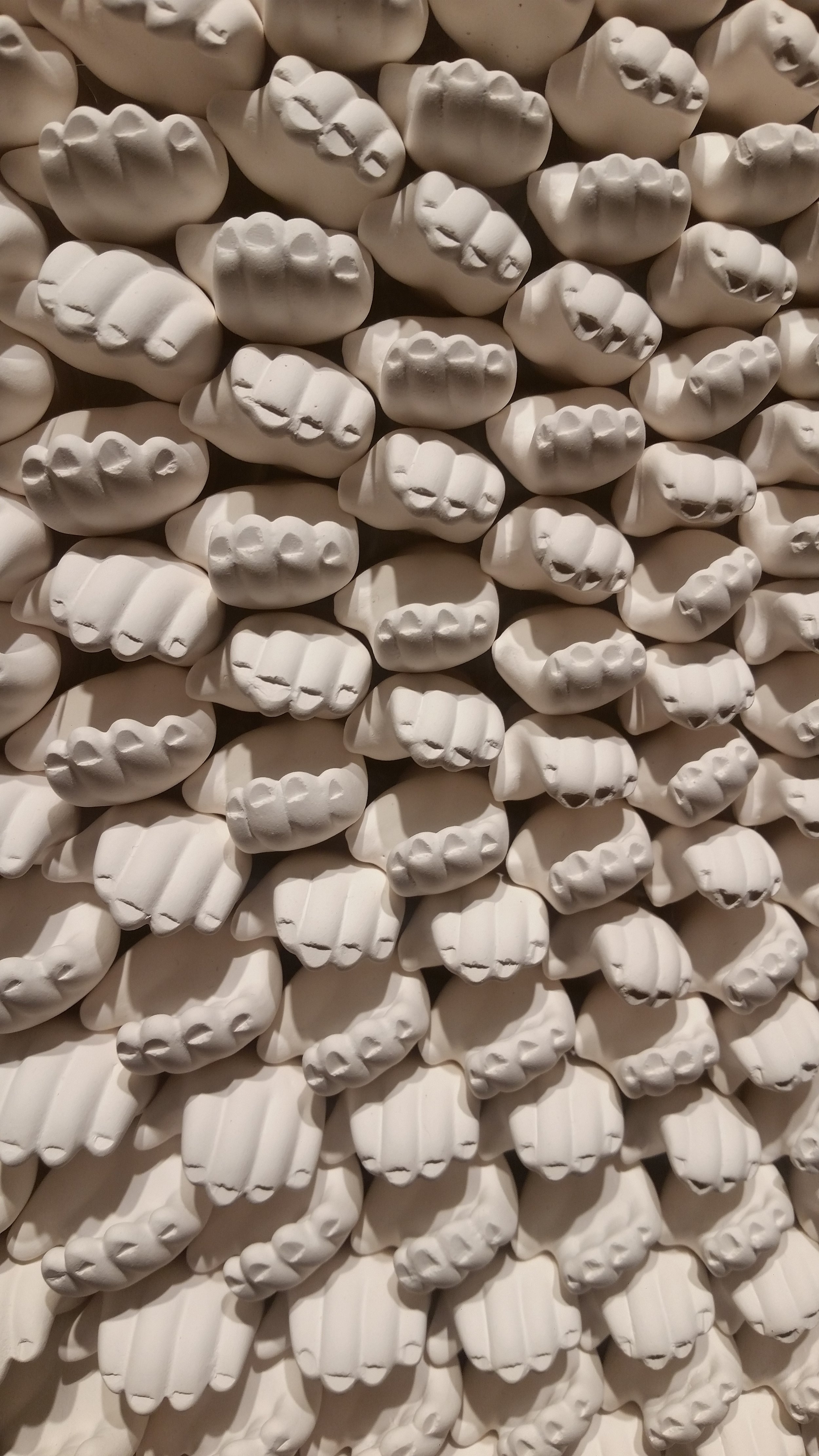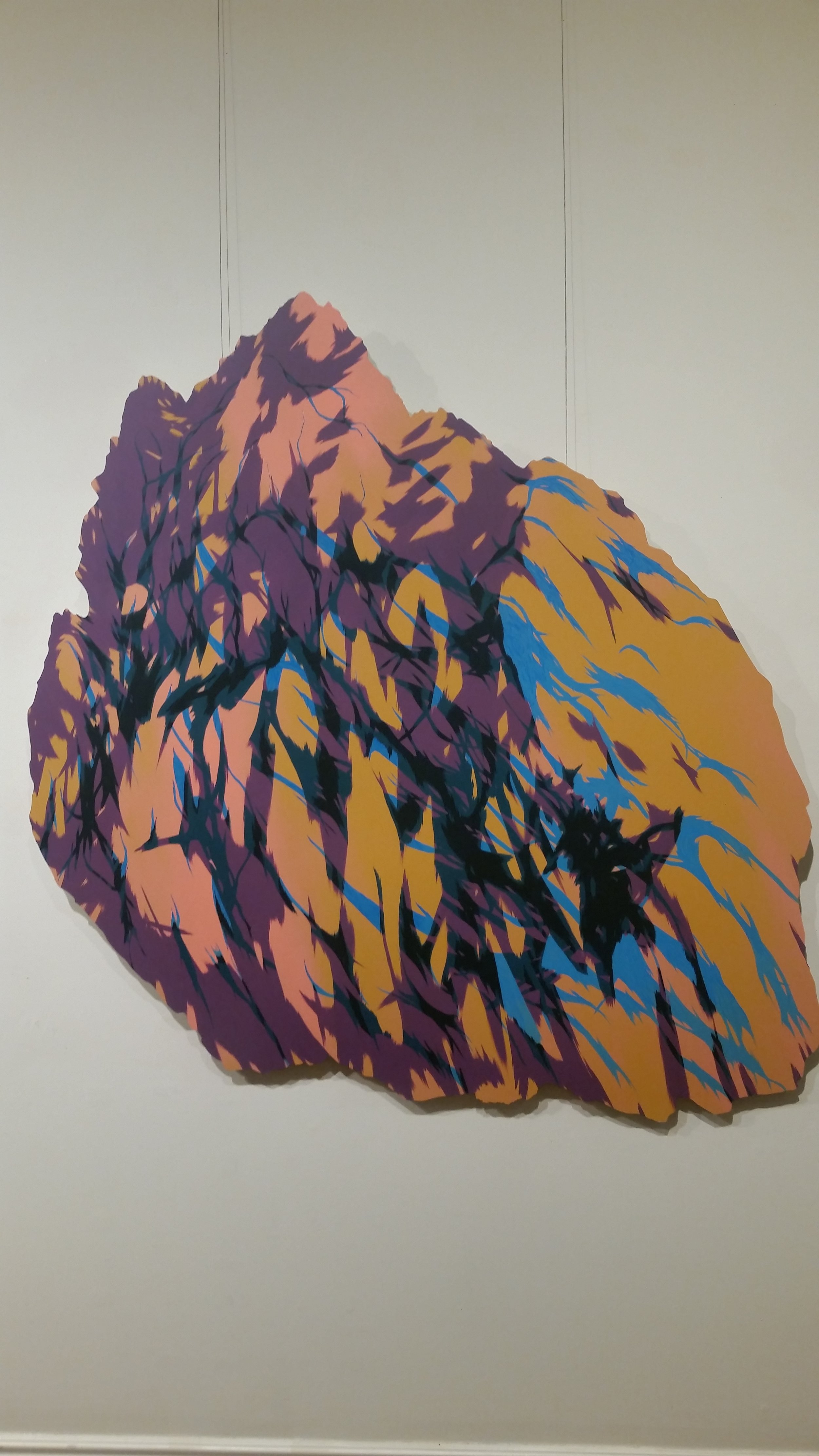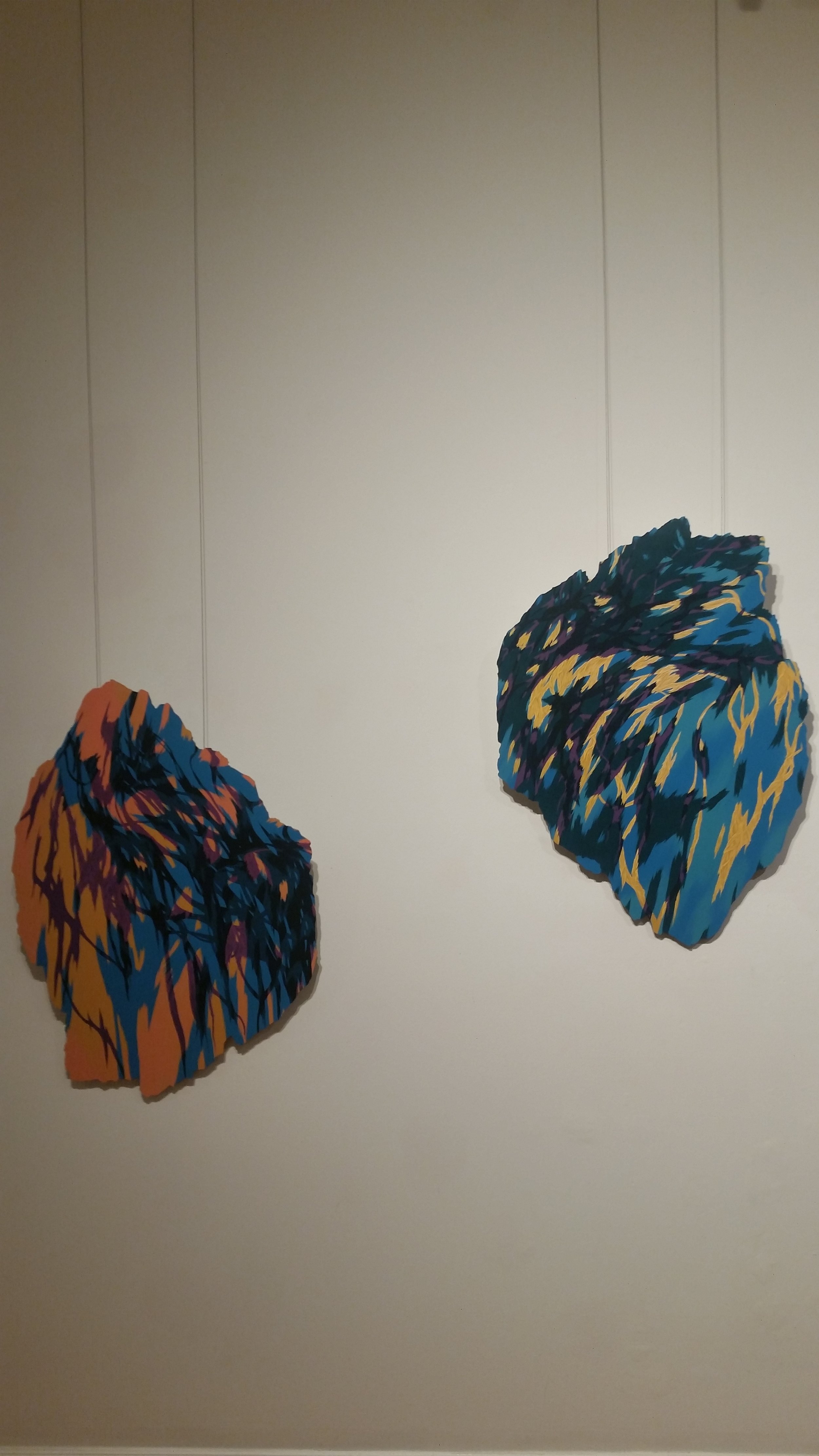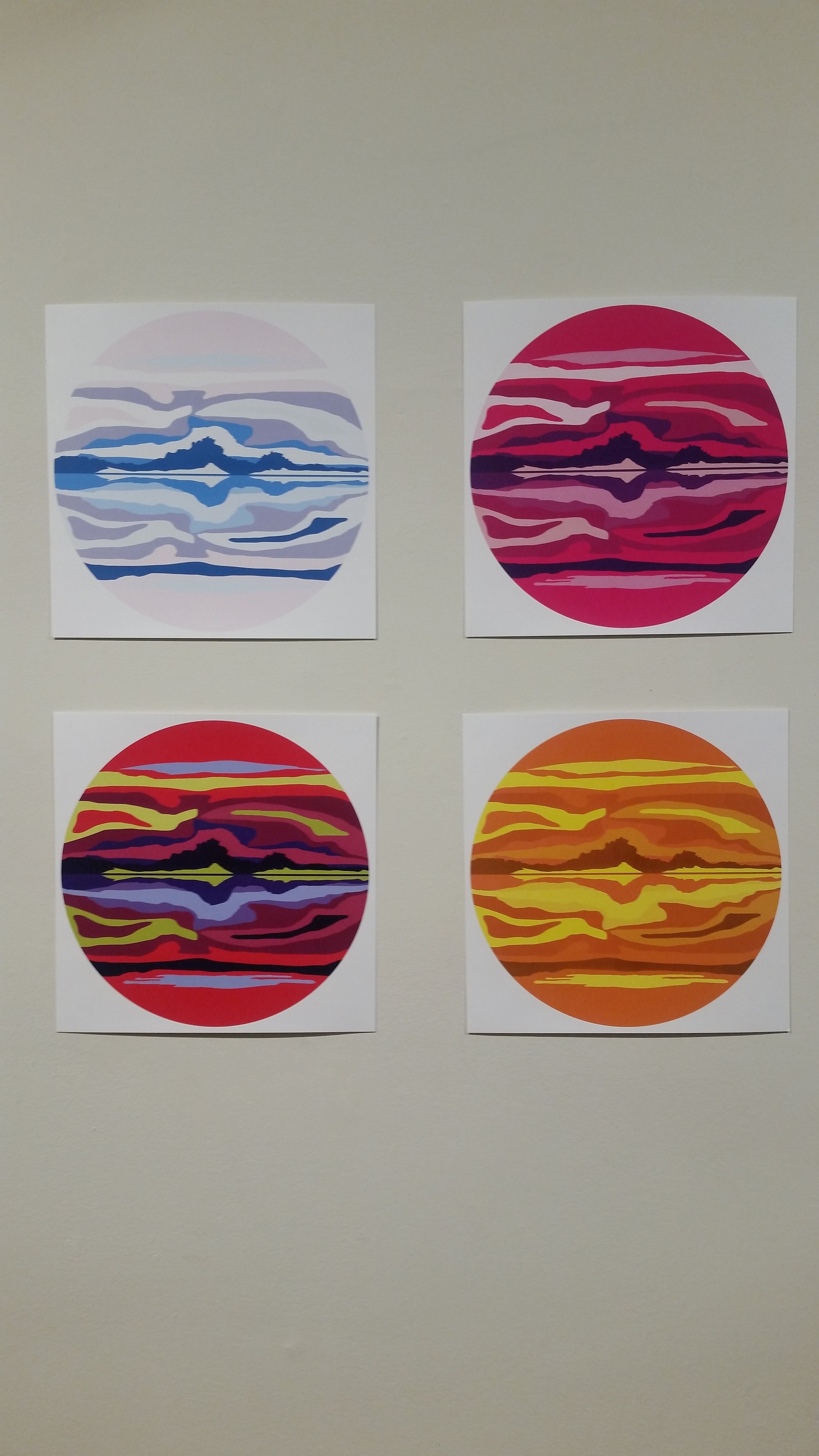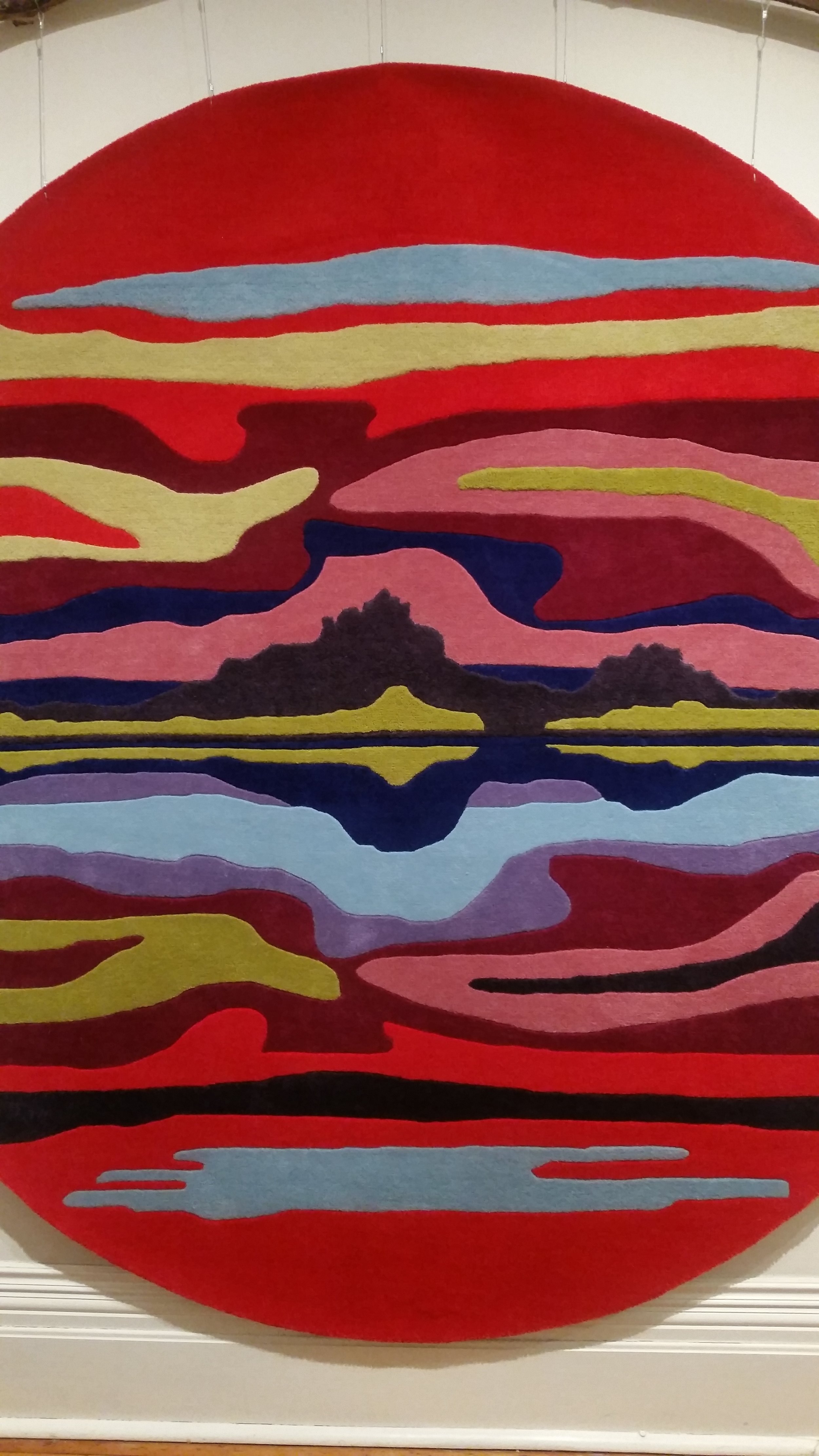2018 marked the 15th anniversary of the popular Toronto alternative art and design event. This was my third time attending. You can read about my 2016 and 2017 visits here and here. Local and international artists and designers took over the historic Gladstone Hotel to create site-specific immersive installations. The art is everywhere. In rooms, hallways, alcoves, and stairwells. Once again, in addition to the installations, some of the artist designed rooms were open for the public to view. This year's event explored how people interact with art and design. Is it a shared experience mediated by an artist or designer? Or is it an individual response triggered by personal experience? Or is it all of the above?
In 2016, the installation with the longest line was Life Moves Fast by The Racket Club (Sarah Keenlyside & Joseph Clement), a re-creation of Ferris Bueller’s bedroom. This year, Ferris Forever, a virtual reality version of the room, also drew a crowd. You can watch the 360 video here.
The fourth floor featured CAPACITY 2018: Hiatus. Capacity is a community and exhibit that showcases the work of Canadian women designers. In the design industry, women are still outnumbered by men. The show curators are providing a venue for the work and names of under-represented women professionals to be seen, while at the same time working to create a community and resource for both women working in design, and a public curious to discover them. Hiatus continues beyond CUTMR and is on view until February 25th.
The theme of highlighting women was at the forefront of many of the CUTMR installations, including Longernin Collective's Post-Part, Roxanne Peckham's He did not beat me, Samantha Jones's Ice Cream, Chelsea Attong's EMBRACE, and Sister Co-Resister.
Here are some of my highlights from this year's show.
Justin de Lima's First Gentrification.
I almost missed seeing this because the line up to Forever Ferris was blocking the entrance to the room. This was a relatable piece. I live in Waterloo Region, an area that is rapidly gentrifying.
The Portuguese Hall is a staple of any Portuguese immigrant enclave and Clube Lusitania was no different. A popular place for Portuguese-Canadians to celebrate baptisms, weddings and the survival of volcanic eruptions, Clube Lusitania was also where the artist's parents were married. Although Justin de Lima had never been, the hall's change to a condo on the trendy Ossington strip inspired a bad habit of romanticizing his family's immigrant experience.
Suspended from the ceiling, these sculptures are made of reclaimed materials that have been pieced together using expansion foam and paint to reflect the violence of gentrification. They are painted a blush pink that is inspired by the palette of many a millennial, gentrifier’s tumblr as well as the displays of the surrounding boutiques that often feature the popular Pantone colour of the year. Considering the artist's cultural and familial ties to the area, having the installation displayed in the neighbourhood they scrutinize best reflects the meaning behind the work: First Gentrification is an exploration of the remains of urban life and the debris of gentrification through a first gen lens.
I posted a video on my Instagram if you wanted to get a better look.
These Pixels Are Too Sweet by An Dy.
An Dy is putting Pixels on trial, calling on a variety of media to challenge and affirm the way we consume art and media. His work postures as stand-ins for the stimulation we receive through our screens at a time where we are both consumed by social media and alienated from it.
figments by Concealed Studios.
These nature inspired sculptures are handmade from paper. The installation was awarded a Toronto Design Offsite Juror's Award.
figments by Concealed Studios.
These nature inspired sculptures are handmade from paper. The installation was awarded a Toronto Design Offsite Juror's Award.
Fernigen C. Thicket by Ashley Snook.
This was an immersive installation that incorporated touch, smell, sight, and sound. It was like being in a creepy forest that smelled great.
This installation addresses metaphysical qualities of interconnectivity between human and nonhuman species. Snook’s work is a trajectory towards biological exploration and animality; reconnecting a raw sense of intimacy between human and animal and the surrounding biosphere through primarily sculpture, installation and drawing.
Untitled by Erin McCutcheon (part of Capacity 2018)
The artist calls this an experiment in curiousity. 1000 tiny porcelain doll hands. 10,000 tiny hand carved fingernails.
Untitled by Erin McCutcheon (part of Capacity 2018)
Shea Chang. "Shades of Commingling" Symbiotic Rock I, II, & III (Part of Capacity 2018)
Shades of Commingling focuses on questioning the boundaries, categorizations and separations between the painter and the subject, the painter and the painted land, the human and the rock beneath our feet.
Hiatus Rug by Katherine Morley (Part of Capacity 2018)
The rug features the view from the end of the dock of her family's Muskoka cottage. A cottage that she considers her second home, and a large piece of her family's history. Soon her family will be saying goodbye to the lakeside property, and that news affected her harder than she expected. The rug was created as a memorial and is part of the artist's grieving process.
Did you attend CUTMR 2018 or any other events during Toronto Offsite Design Festival? I'd love to hear about your favourites.
Story and photos by Glodeane Brown
If you liked this post, please like, comment, and share.


